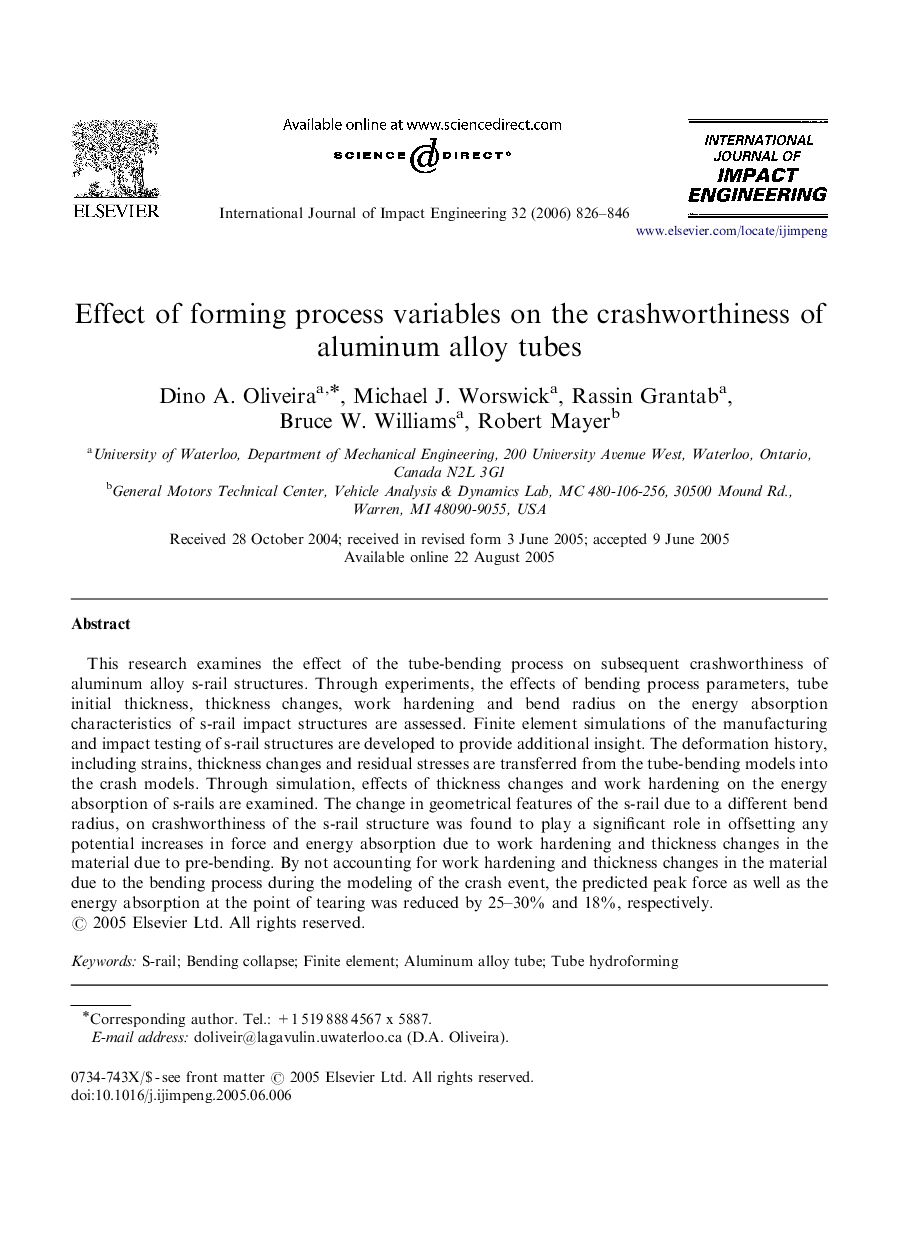| Article ID | Journal | Published Year | Pages | File Type |
|---|---|---|---|---|
| 777317 | International Journal of Impact Engineering | 2006 | 21 Pages |
This research examines the effect of the tube-bending process on subsequent crashworthiness of aluminum alloy s-rail structures. Through experiments, the effects of bending process parameters, tube initial thickness, thickness changes, work hardening and bend radius on the energy absorption characteristics of s-rail impact structures are assessed. Finite element simulations of the manufacturing and impact testing of s-rail structures are developed to provide additional insight. The deformation history, including strains, thickness changes and residual stresses are transferred from the tube-bending models into the crash models. Through simulation, effects of thickness changes and work hardening on the energy absorption of s-rails are examined. The change in geometrical features of the s-rail due to a different bend radius, on crashworthiness of the s-rail structure was found to play a significant role in offsetting any potential increases in force and energy absorption due to work hardening and thickness changes in the material due to pre-bending. By not accounting for work hardening and thickness changes in the material due to the bending process during the modeling of the crash event, the predicted peak force as well as the energy absorption at the point of tearing was reduced by 25–30% and 18%, respectively.
